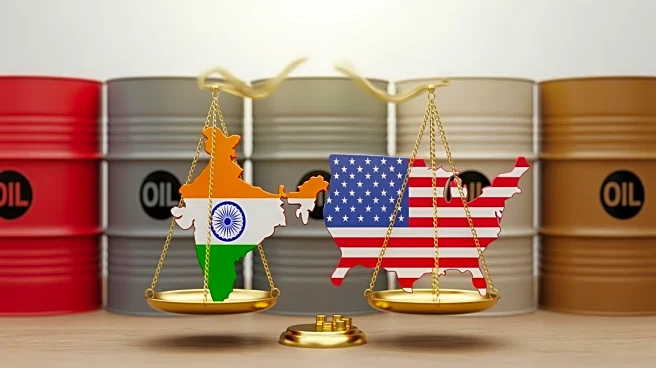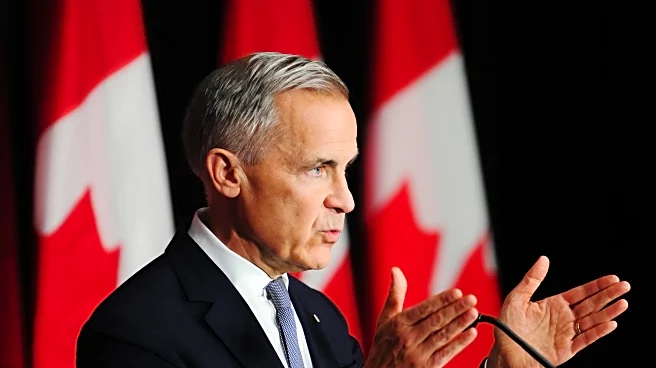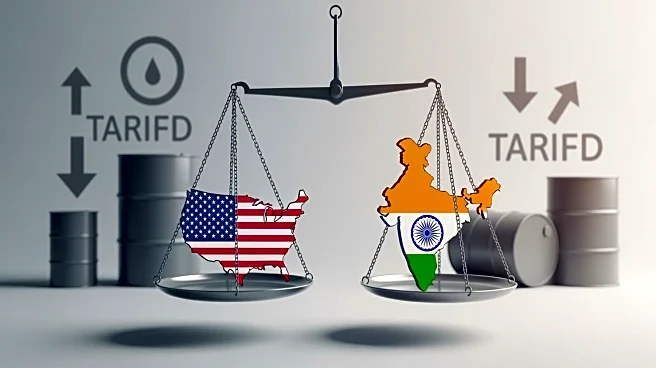What's Happening?
India and the United States are reportedly close to finalizing a trade agreement that would significantly reduce tariffs on Indian exports to the U.S. from the current 50% to 15%-16%. This development
comes as part of broader negotiations where India has agreed to scale back its purchases of Russian oil. The discussions have been ongoing, with both countries aiming to boost bilateral trade to $500 billion by 2030. The potential deal also includes India increasing its import quota for non-genetically modified corn from the U.S. and establishing a mechanism for revisiting tariffs and market access over time.
Why It's Important?
The trade deal is significant as it represents a strategic shift in India's energy and trade policies, potentially reducing its reliance on Russian oil amidst global geopolitical tensions. For the U.S., the reduction in tariffs could enhance market access for American goods, fostering economic ties with India, a key player in the Indo-Pacific region. This move could also align with U.S. efforts to economically isolate Russia by reducing its oil revenue. The agreement could have substantial implications for global energy markets and trade dynamics, affecting stakeholders in both countries' agricultural and energy sectors.
What's Next?
As the trade deal nears completion, both countries are expected to finalize the terms, potentially leading to an official announcement soon. The agreement may prompt reactions from other major oil producers and trading partners, influencing global trade policies. Additionally, the deal could set a precedent for future U.S. trade negotiations, particularly in the context of geopolitical alliances and energy security.













